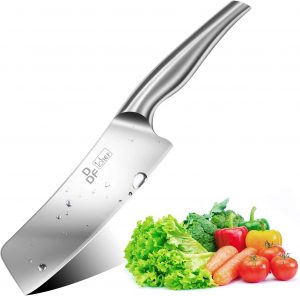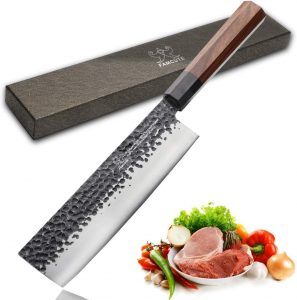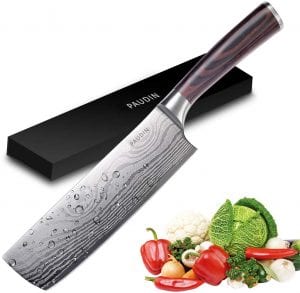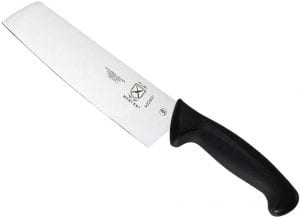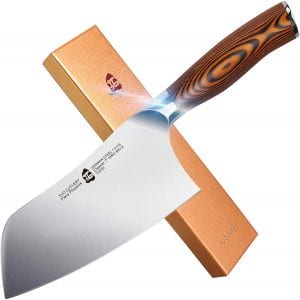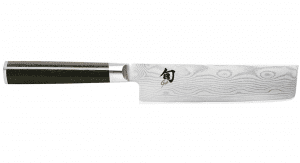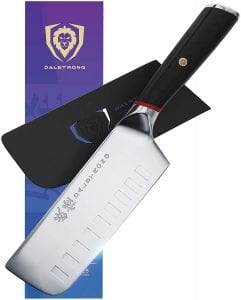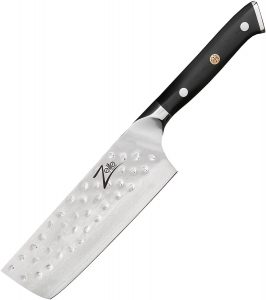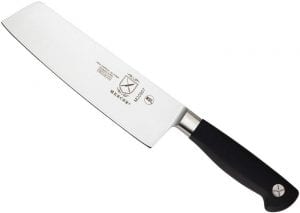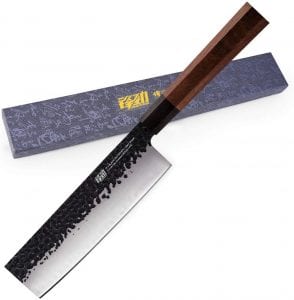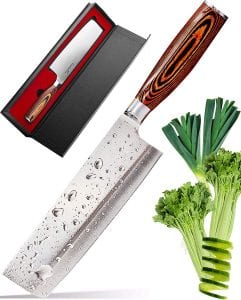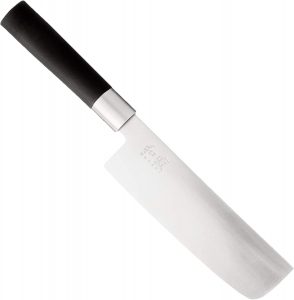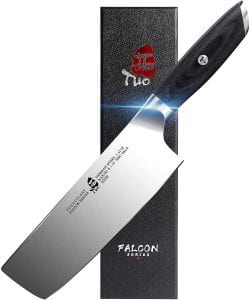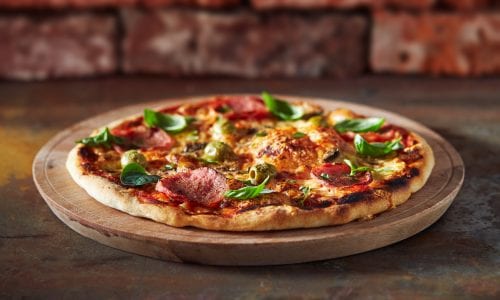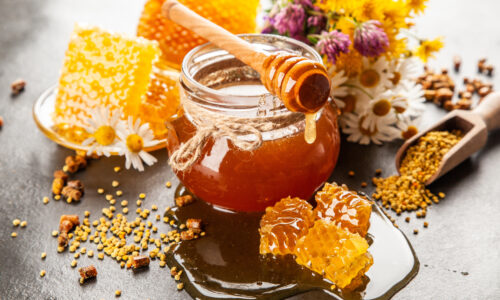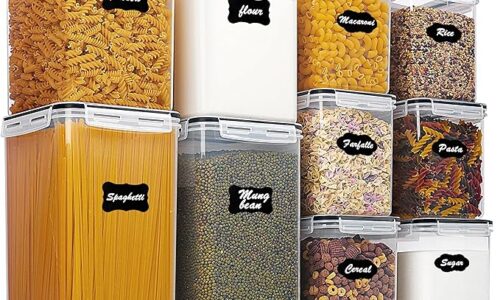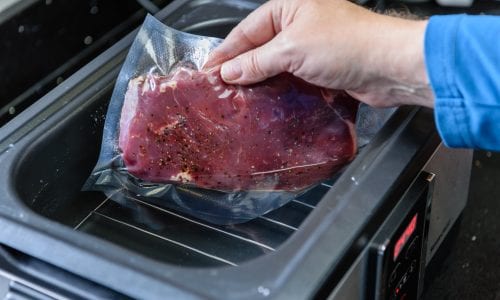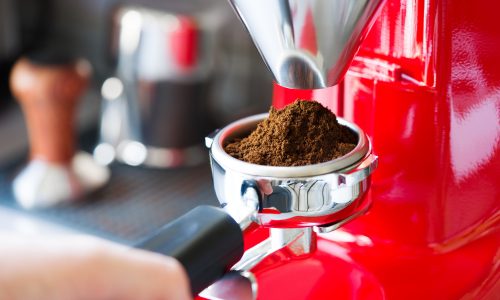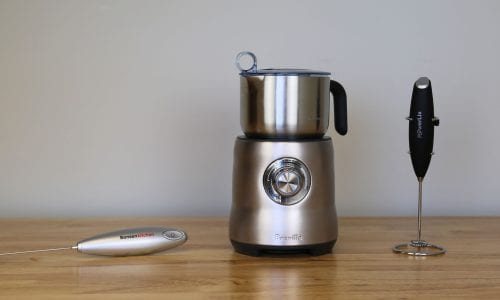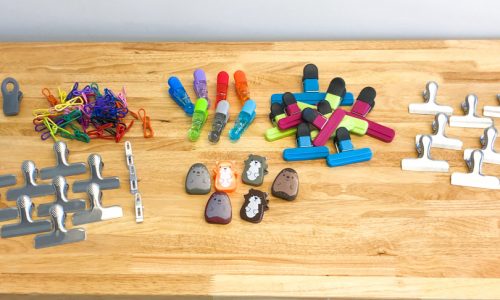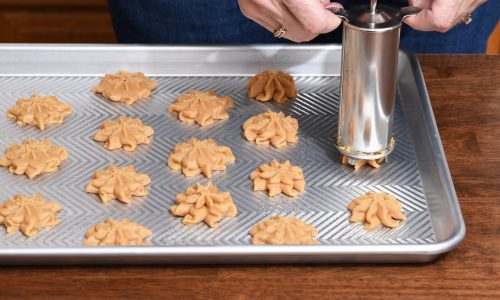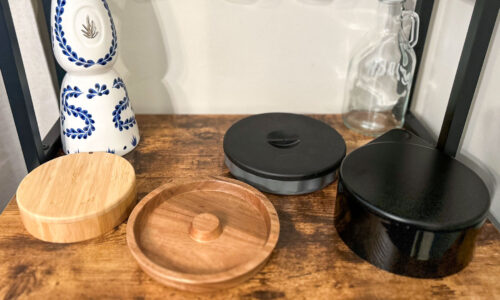The Best Nakiri Knife
We looked at the top 15 Nakiri Knives and dug through the reviews from 32 of the most popular review sites including and more. The result is a ranking of the best Nakiri Knives.
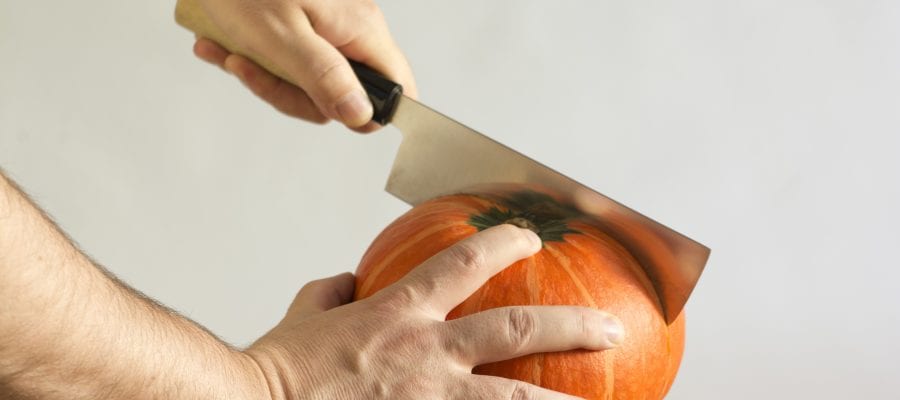
Our Review Process
Don't Waste Your Money is focused on helping you make the best purchasing decision. Our team of experts spends hundreds of hours analyzing, testing, and researching products so you don't have to. Learn more.
Our Picks For The Top Nakiri Knives
- 1. MOSFiATA Multifunctional Angled Nakiri Knife, 7-Inch
- 2. DDF iohEF Double-Edged Balanced Nakiri Knife, 7-Inch
- 3. FAMCÜTE 9CR18MOV Octagon Handle Nakiri Knife
- 4. PAUDIN All-Purpose Ultra Sharp Nakiri Knife, 7-Inch
- 5. Mercer Culinary One Piece Japanese Nakiri Knife, 7-Inch
- 6. TUO Cutlery Professional Nakiri Knife, 7-Inch
- 7. Shun D-Shaped Ebony Finished Nakiri Knife, 6.5-Inch
- 8. Dalstrong Full Tang Traditional Nakiri Knife, 6-Inch
- 9. Zelite Infinity Vegetable Nakiri Chef Knife, 6-Inch
- 10. Mercer Culinary Forged Nakiri Vegetable Knife, 7-Inch
- 11. Findking Dynasty Series Hand Forged Nakiri Knife, 7-Inch
- 12. Mac Knife Balanced Double-Beveled Nakiri Knife, 6.5-Inch
- 13. TradaFor Right Handed Non-Slip Nakiri Knife, 7-Inch
- 14. Kai Traditional Wear-Resistant Nakiri Knife, 6.5-Inch
- 15. TUO Ergonomic Handle German Nakiri Knife, 6.5-Inch
The first thing you'll notice about this top-notch nakiri knife is the attractive gift box it arrives in. This makes it an excellent choice as a housewarming, birthday or Christmas gift. Next, you'll be impressed by the super sharp German stainless steel that also happens to be hand-polished.
Rust and Corrosion ResistantThis nakiri knife measures 7 inches and weighs just 8.8 ounces.
With this professional-quality nakiri knife, you'll be able to make quick work of vegetable prep. It's constructed using a sharp and durable German stainless steel with a blade angle of 15 degrees. Home chefs will also appreciate the ergonomic handle, which provides better control while also being comfortable to hold.
Affordable PickWhen shopping on a budget, this economical nakiri knife is the way to go.
The hand-polished v-shaped edge on this nakiri knife allows for smooth and comfortable cuts. You'll get stability from the ergonomic handle, which is constructed from an African rosewood and shaped like a hexagon. The knife is perfect for slicing through vegetables and fruits, as well as cutting and preparing a variety of meats.
Attractive Gift BoxNot only does this nakiri knife make for an excellent housewarming gift, but it's also perfect as a wedding, engagement or anniversary present.
No kitchen is complete without a multipurpose nakiri knife. This 7-inch knife is constructed from a high-carbon German stainless steel, so you can feel confident that it will last for many years to come. It's also outfitted with a soft pakkawood handle that provides a comfortable grip and a sleep black storage box for gift giving.
Multipurpose Asian Chef KnifeThe razor sharp edge on this nakiri knife allows users to quickly cut through fish, cabbage and venison.
Buying Guide
You don’t have to be a chef to benefit from using a professional-quality knife. In fact, even occasional home cooks can take their dishes to the next level by collecting an assortment of top-notch kitchen knives, such as a good nakiri knife.
A nakiri knife, also known as a nakiri bōchō or usuba bōchō, is a Japanese-style knife created for chopping vegetables. The thin blades are especially useful when precision is important. For instance, if you hope to slice even harder fruits or vegetables in a uniform thickness, a nakiri knife is the ideal kitchen tool. It is an effective knife for mincing, slicing, dicing or chopping most varieties of produce efficiently and consistently.
An added benefit of owning a dedicated vegetable knife such as a nakiri is that you eliminate the possibility of cross-contamination that could occur when a knife is used to slice raw meat and then accidentally utilized for chopping vegetables without a thorough cleaning first.
It is similar in appearance to a meat cleaver, with a straight blade and squared-off tip. This design allows the knife to easily cut straight down through vegetables to the cutting board or surface without the need to push, pull or “saw” horizontally through the ingredient.
A nakiri knife might have a traditional Japanese handle or a European handle. Japanese knife handles are often made of wood, which requires a bit more maintenance than a metal handle. For instance, like other wooden kitchen utensils, a wood-handled knife will need occasional oiling and special cleaning.
In addition, European knives usually have what is called a full tang, while Japanese-style knives have a hidden or partial tang, which pertains to the steel of the blade in the handle. A full tang blade runs throughout the handle and is made in the same shape as the handle. You can see the steel of the blade from any angle of the handle. A hidden tang is smaller than the handle material. The handle wraps around the tang so the metal of the blade is not visible. Some people find hidden or partially hidden tang handles easier to grip and manipulate.
The blade on a nakiri knife is quite thin and typically ranges between 165-180mm and the blades are almost always beveled on both sides.
Because of its tall, symmetrically sharpened, razor-thin blade, the knives slice through vegetables with such ease. You do not need to rock the blade or worry about smashing delicate produce, as the blade glides through smoothly and evenly.
“Given its straight edge, the Nakiri is not meant to replace the rocking motion of the Western Chef’s knife,” says Julie Chernoff, dining editor of Better, a lifestyle website and print magazine, and our in-house kitchen tool expert. “You can chop fluidly with the Nakiri without rocking. It’s known for making clean cuts, and won’t damage or smoosh the veggies.”
A nakiri can be more gentle on the user than other knives, as well. Not only will you easily avoid rapping your knuckles on the cutting board using a nakiri knife to chop veggies, but you will also find yourself slicing and dicing like a pro because these knives are so easy to use.
Our Expert Consultant

Culinary Expert
Julie Chernoff is a long-time member of Les Dames d’Escoffier (past president of the Chicago Chapter, and current co-chair of the LDEI Legacy Awards Committee), the Association of Food Journalists (AFJ) and the International Association of Culinary Professionals.
Chernoff is the dining editor of Better, a lifestyle website and print magazine. Her journalism started in the test kitchens of Weight Watchers Magazine. She holds a BA in English from Yale University and is a graduate of the California Culinary Academy. She has spent the last few decades styling, photographing, teaching, developing recipes, editing, thinking and writing about food.
Why we recommend these nakiri knives?
Products Considered
Products Analyzed
Expert Reviews Included
User Opinions Analyzed
Our experts reviewed the top 15 Nakiri Knives and also dug through the reviews from 32 of the most popular review sites including and more. The result is a ranking of the best of the best Nakiri Knives.
DWYM is your trusted roduct review source. Our team reviews thousands of product reviews from the trusted top experts and combines them into one easy-to-understand score. Learn more.
The Best Bang For Your Buck
DDF iohEF Double-Edged Balanced Nakiri Knife, 7-Inch
Key Takeawy
With this professional-quality nakiri knife, you'll be able to make quick work of vegetable prep. It's constructed using a sharp and durable German stainless steel with a blade angle of 15 degrees. Home chefs will also appreciate the ergonomic handle, which provides better control while also being comfortable to hold.
What to Look For
- When using a nakiri knife, only cut in an up and down motion. Avoid trying to slice vegetables horizontally with the knife. Keeping your fingers bent like claws and touching your knuckles lightly to the blade, glide the knife up and down in a straight and even cut. The knife will chop through the vegetables onto the cutting board without extra force.
- As with any kitchen knife, clean a nakiri knife promptly after using it. If you will be cutting more vegetables later, wipe the knife with a clean kitchen towel before setting it aside.
- Only cut fresh produce with your nakiri knife. Avoid trying to cut frozen vegetables, as this could damage or dull the blade.
- Although the design of a nakiri knife greatly reduces the chance of injuries, it is still important to use it properly and take care when slicing with it. Along with keeping your fingers curled under and using your knuckles as a guide, make sure your grip is comfortable but firm. Check the sharpness of the blade often, as a dull blade requires more pressure to use, which can lead to accidents.
- Choose a good quality chopping board and always cut with the board on a flat surface.
- Hold the knife in your dominant hand with your thumb on one side, your index finger on the top of the blade and your remaining three fingers on the handle for a firm grip and precise control will give a firm gripping as well as precise control.
- Like with other sharp knives, you want to make sure that you are comfortable with the grip so that you can maintain control, says Chernoff. “Look for ergonomically designed handles that fit nicely in your hand.”
- One of the factors to consider when shopping for a nakiri knife is the material. For instance, high-carbon steel knives stay sharper longer than stainless steel knives do. While they still require sharpening at least once a year, they easily retain a desirable razor-sharp slicing ability. It is also important to note that carbon steel knives are more brittle and prone to rusting than their stainless counterparts are. However, you can avoid breaking, rusting and staining by washing your knife by hand (knives really don’t belong in the dishwasher), drying it promptly and treating it with care.
- Rubbing a light coat of mineral oil on your nakiri knife is one more step you can take when you are done using it. This provides a protective layer to prevent it from rusting.
More to Explore
Roughly translated from Japanese, nakiri means “leaf cutter,” denoting the tool’s intended purpose. Although nakiri knives cut fresh greens like a dream, they are suitable for slicing up virtually any type of produce.
Japanese kitchen knives such as nakiri vegetable knives have been developed by blacksmiths and craftsmen for centuries. In fact, steel kitchen knives were historically crafted by the same tradesmen who hammered out the katana used by samurai in feudal Japan. Just as the samurai’s sword was said to be his soul in ancient Japan, one might say the same about a chef’s knife.
In the 1850s, Japan’s long-isolated ports opened to Western trade, which started the shift from sword-crafting to knife-crafting. During the United States occupation of Japan during World War II, the production and possession of swords was banned, which further prompted the numerous, highly-skilled craftsmen to begin using their skills to create kitchen knives. Even after the ban was lifted, limits on the production of swords remain in place and the sharp, precise kitchen knives continue to be a focal point.



